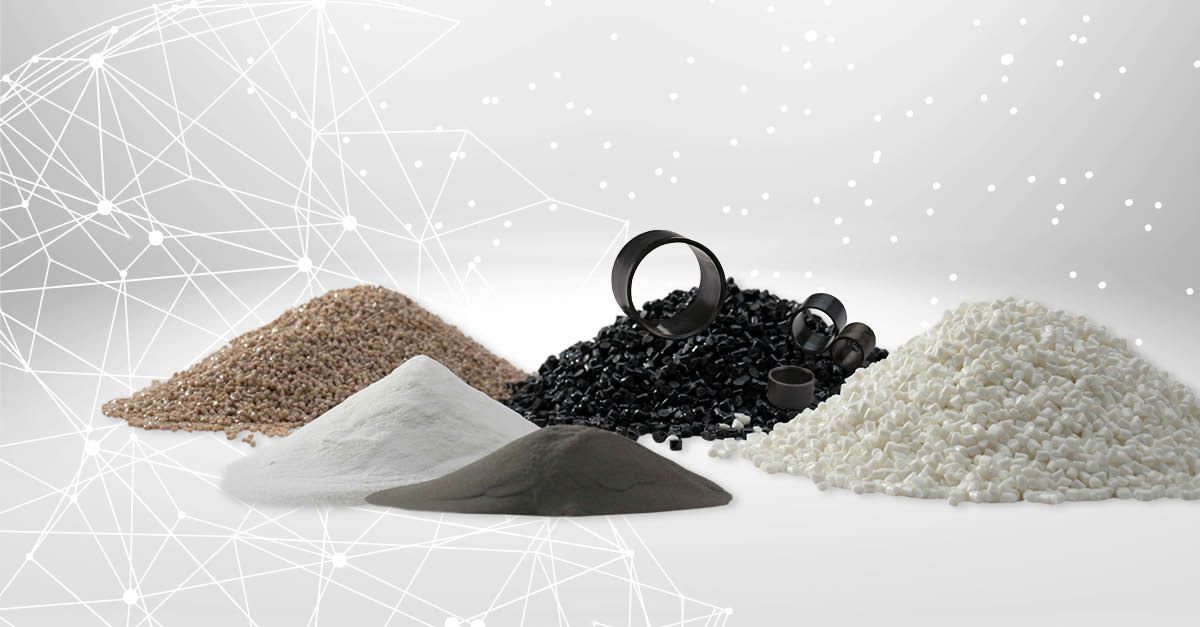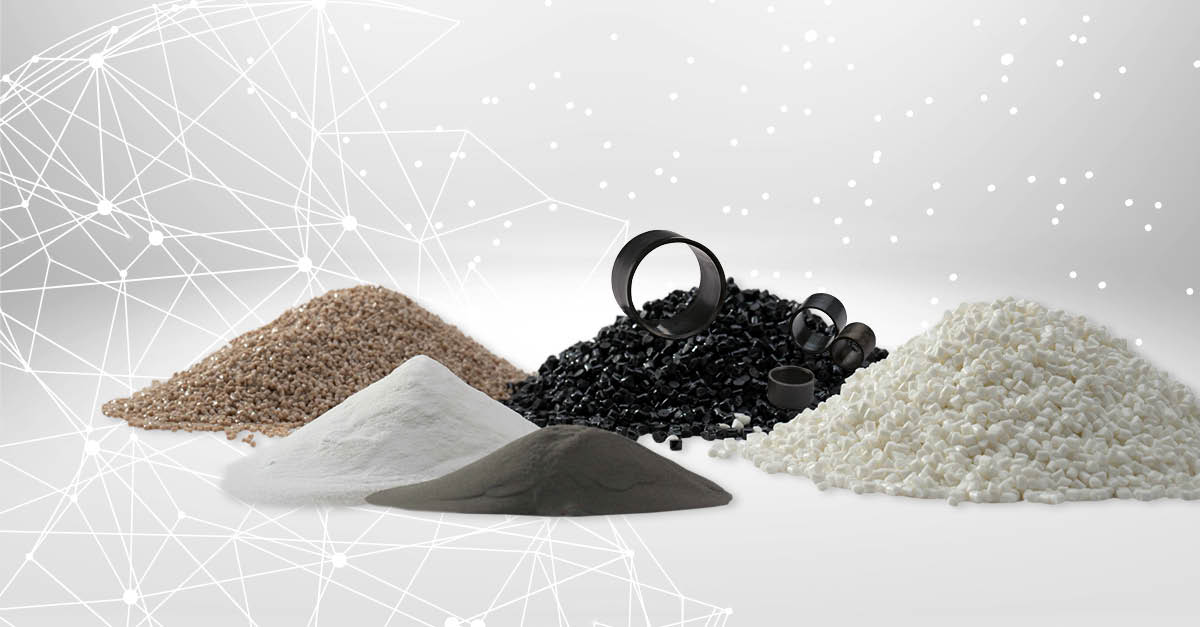Tribological high-performance compounds - true all-rounders.

When the keywords "high performance" or "all-rounder" are mentioned, the air is generally thin - at the latest, this is where the wheat begins to separate from the chaff. This applies all the more to plastics and polymers in tribological applications. When speeds, pressure ratios, operating times or temperatures in sliding or ball bearings, for example, increase massively, when the requirements for sliding friction properties and the expectations for TCO optimization grow at the same time, and when the performance capabilities of standard plastics such as POM, PBT or polyamides reach their limits - then high-performance polymer-based compounds come into play.
Then it also quickly becomes clear which polymer was only convincing on the data sheet and which will also make it into series production after the successful development period - quite simply because it could be further and further adapted to the requirements in fine tuning. And above all, it quickly becomes clear whether the compound supplier "behind" it is really just a supplier or a material developer who knows his trade. Who has mastered the compounding of polymers, additives and fillers to such an extent that he always has an answer to the question "Can the plastic do it?". Can the compound deliver the peak performance that we designers demand of it?"
Behind a tribological high-performance compound there is always a whole team that helps it to mature into an all-rounder.
In order to meet constantly increasing requirements in tribological systems - such as sliding sun roofs for cars, plain bearings for diesel injection pumps or bearing cages for wind turbines - a tribological high-performance compound has to undergo a tough "training camp" or successfully master a highly selective selection process. On the way to the title of "high-performance compound" champion, the budding all-rounder has to overcome a number of hurdles:
Requirement number 1: A high-performance compound must be a good team player.
A polymer alone may be as stiff and strong as it is, have fantastic sliding properties or even the highest chemical resistance - without perfect interaction with additives or fillers such as silicone oil, graphite or carbon fibers, it will not survive the further selection rounds. Here, of course, it is of great advantage if the material developer a) has a wealth of experience as to which polymer works/interacts particularly well with which additive or filler and in which ratio, and b) if he has as wide a range of compound constituents as possible - comparable to a pharmacy cabinet with countless active ingredients and possible combinations of active ingredients. This puts him in the position of being practically completely free in his choice of the required materials/polymers or their combination with additives and fillers.
Requirement number 2: A high-performance compound must always remain open to new formulations.
A recipe for a compound may already have proven to be a true recipe for success - yet it must always remain open to a new composition, i.e., it must repeatedly be exposed to new admixtures or recipe suggestions. This is the only way for the material developer to create the best individual solution for each newly defined compound requirement. And this is always multifaceted - depending on the application, the spectrum can range from a particularly high operating temperature to a wide range of dimensional stability to extreme chemical resistance. A broad spectrum, as is typical for true all-rounders.
Various "sparring partners" demand the maximum performance from the tribological compound at an early stage, which it is later expected to deliver in daily use.
Requirement number 3: A high-performance compound has to stand up to tough tests again and again.
Further developing a tribological high-performance compound also means testing it again and again. And not just "5 before ramp-up", but again and again throughout the entire development process. Close to the application, parameters such as speed, pressure, type of motion, time, temperature and even mating partners can be simulated. These test methods have bulky names (from block-on-ring and SRV tribometers to ball-prism and pin-on-plate tribometers to pin-on-disk and thrust-washer tribometers) - but they provide crystal-clear figures for the most diverse development stages as they exist, for example, within the framework of a stage-gate model.
Conclusion: Tribological high-performance compounds need systematic training with a lot of sensitivity.
Many high-performance compounds have the best prerequisites to meet the expectations placed on them - in theory. But very few of them survive the numerous rounds of testing that a material has to undergo in the course of product development before it is ready for series production. Simply because they do not have the backing of a competent, experienced team that knows how to get the best out of them. LEHVOSS has these teams that make a high-performance tribological compound a true all-rounder. They consist of application, material and market developers, respectively. Plastics engineers, mechanical engineers and materials scientists. In short, people who understand their craft - and that of their customers. From the initial idea to the production-ready component in daily use.
Concrete application examples for tribological high-performance compounds.
Example 1: Use in sliding car sun roofs.
As with all vehicle components, sliding sun roofs also have a comprehensive catalog of requirements in terms of their technical challenges, which have to be met by the system manufacturers. Requirements in terms of costs, weight and process reliability are included as standard:
- The weight must be as low as possible to keep the vehicle's center of gravity low.
- There must be no disturbing noises at any time. No rattling, creaking, squeaking or the like - the attentive ears of the passengers are always close by.
- The sunroof must be able to be opened and closed countless times - without any functional impairment.
- A large number of individual parts must work together - literally - smoothly, easily and ideally without external lubrication. Precisely also to ensure the system reliability needed to provide a complete solution that can be delivered directly to the production line.
The LEHVOSS material solution:
- Inherently self-lubricating tribological compounds that do not require additional lubrication.
- Compounds with maximum strength and stiffness. For components that also pass tests with the sliding roof open at over 120 mph.
- High-performance compounds which - in order to ensure full system responsibility - are created in close collaboration/cooperation between system supplier and material developer.
- Compounds with carbon fibers. Compared to glass fiber compounds, these offer the advantages of being significantly stiffer and stronger, while at the same time possessing excellent tribological properties: wear of the mating partner is avoided.
Example 2: Ball bearings in wind turbines.
The system approach also pays off for ball bearings in wind turbines. A ball bearing made of a tribological high-performance compound, into whose development the expertise of both the designer and the material developer has flowed from the very beginning, will be convincing from a TCO point of view, especially in the long term. Simply because it is more efficient, more reliable, more resistant and thus extends maintenance intervals and reduces failures. Based on a modified compound that more than meets corresponding performance parameters such as pressure, strength, wear and also sustainability.
The tribological compounds from the LEHVOSS Group based on the high-performance polymer polyetheretherketone (PEEK) are used here. PEEK is particularly convincing from a TCO point of view, as it pays for itself very quickly despite higher material costs. The "eco" PEEK variant adds to this. As LUVOTECH eco PEEK, the compound impresses in terms of sustainability with a carbon footprint reduced by up to 90 percent.

